EXHIBITIONS, PUBLIC WORKS & VIDEO ART
DESIGN
CV 2022
“From her perspex silhouette in the street, in 1970, to the steps of light in Endless Ladder and Caged Paradise, 2001, Federica Marangoni liberated a sign forest of paths, drawing a rhizomatic map of movements on the land and a flight route for Utopian projects.”
“Federica Marangoni, who taught the language of glass applied to electronics for 12 years at New York University, has carved out a place for herself in the history of contemporary art. In the parks of memory she has cultivated preserves of reality that are being steadily pushed into oblivion by electronic hallucination. Her presence in the art world never ceases to foster osmosis between the socio-psycho-philosophical aesthetic culture of the old Europe, and that of the renewed communicational parameters of the younger America. The golden measure of her sculptures of time and space mixes with the excess of American mega structures.”
“Federica Marangoni, who has already done public works for Spain, in Seville and Barcelona, continues to deliver to the squares and streets of art messages in defence of the values of ethics and aesthetics, of the vitality of a project for a liveable world.”
(Viana Conti, from the book “The Place of Utopia”, Mazzotta Publisher, Milan, 2008.)
THE TIME MACHINE, 2014
For Piazza Grande, Arezzo, Italy. Commissioned by Fraternita dei Laici. H 120”, diameter 33”, structure in golden steel, 6 tubes of yellow neon H 78” in PVC tubes with a timer. Electric equipment inside the base.
“Time is a thought connected to life itself; time passes by and ends with us. A project reflecting upon the concept of time is a very ambitious proposition for a figurative artist. Many philosophers have written on the topic but attempting to represent it by way of physical images and works is even more complex than analysing it using words. The palpitation of light is like the beating of a heart; the heart is the tempo of life. Death is forever and timeless; years, hours, minutes are a human thought, related to existence and calculated forever by man by mean of: “Time Machines”, built and perfected by him, sun dials and the modern wristwatch, worn by us and constantly checked. Light is a fundamental material in this artwork, a palpitating metaphor of the heart, the time machine of our life. This golden hourglass is a contemporary piece, a vital and ephemeral object, celebrative of life itself.” (Federica Marangoni)
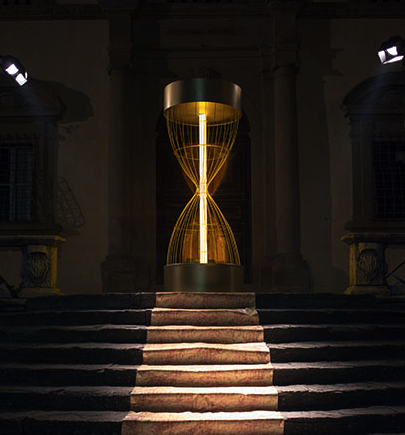
THE TIME MACHINE, Arezzo, 2014
GO-UP THROUGH ARCHITECTURE, 2013
Milan State University, Italy. H:12 m, iron net structure, cracked tube neon, always in motion and neon signes. The work is made with Cracked Tube neon, a tube whose structure has been modified to create a continuous interruption of the neon gas, which separates and produces a visual effect of continuous electrical discharge, like a lightning bolt. From the staircase, over 12 m high, emerges the sign Go Up. The Cracked Tube neon is used for the first time by the artist and designer Federica Marangoni for the work created for the exhibition Hybrid Architecture & Design, Milan 2013 . With F.A.R.T. transformers.
“To build with light, which is the central element of life. There would be no life without light, light is form and sign for the eye and the mind”: the value of light is at the base of the work Through Architecture, of great conceptual and visual impact. A red neon staircase makes a total, ascending cut through the architecture of the portico of the “Cortile d’Onore” of the State University of Milan, an imposing architectural sign. The staircase indicates ascent, connection, arrival, but it is ephemeral, unstructured, made of light in continuous movement. It is a metaphorical immaterial presence, like the thought of an architect or a poet, or the hybrid dream of both: a spiritual and conceptual utopia. The work uses the figure of the staircase, a very important sign in architecture, but made with other materials; an aerial and ethereal structure that contrasts the architectural solidity and crosses the classical presences of the historic archways of the University. It represents the intersection of the work of an artist, architect or designer, whose disciplines have become hybrids in their practice and expressions.”
(Federica Marangoni)
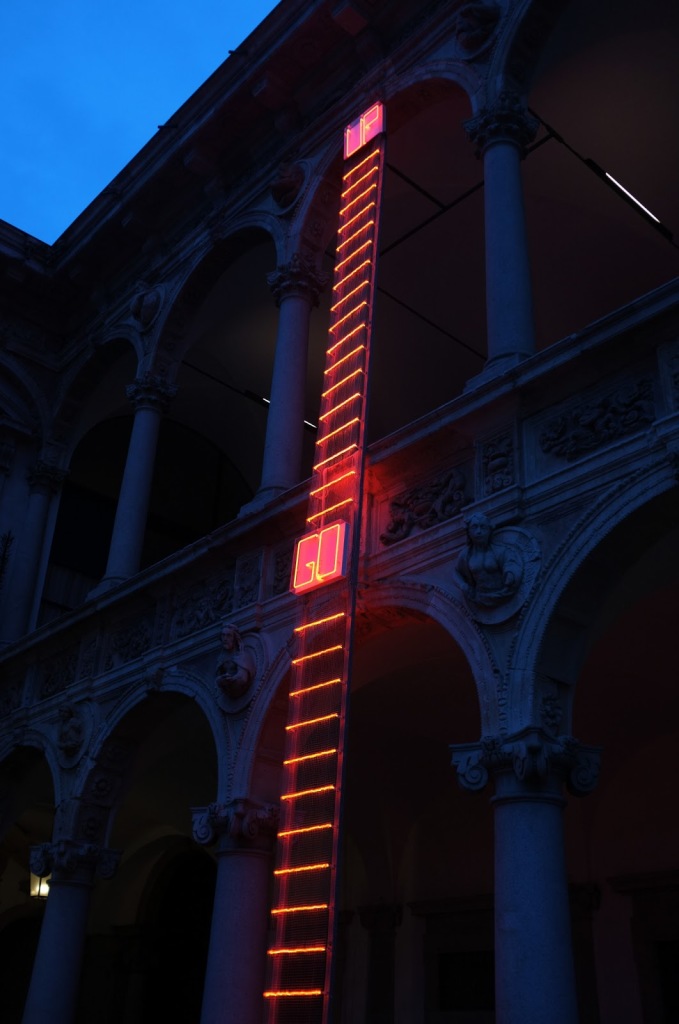
GO UP THROUGH ARCHITECTURE, Milan, 2013
AN IMPOSSIBLE FLIGHT, 2012
Brufa, Perugia Italy. Local stone structure 27′ x 3′, sail 13’x 5′. Media: Serena stone, blue neon, Corten iron, chain. Site Specific artwork for the public collection every year committed to a sculptor, by the Town Hall of Borgo Brufa, Umbria region. The kite theme is a constant presence in Marangoni’s work, since the 80’s, in various media but always with a neon thread.
“It is the metaphor of the man’s dream, retained to hearth, an impossible dream, the fallen angel, in this case an impossible flight, because the lightness has been replaced with heavy and deaf material, it is Icarus’s dream.”
(Federica Marangoni)
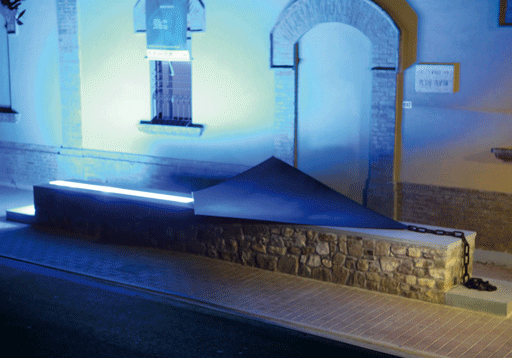
AN IMPOSSIBLE FLIGHT, Brufa, Perugia, 2012
CONJUNCTION, 2011
Castiglione del Lago, Perugia, Italy, “La Cerreta Collection”. Ladder cadged at the base with an iron structure, red LED stairs, cadged
20 ft high, with 21 steps in LED red light, is cadged at the base for 6 ft and rises from a pile of red Murano raw glass, the media from which light takes origin. Concept: Conjunction, with his light red as fire, is based on earth where man lives and works; it attempts to rise through a great olive tree, to the sky, forever. Light, metaphor of Energy and will, mutates this common object, raw and rusty, into a spiritual vision an artifice, a minimal and pure dream.

CONJUNCTION, Perugia, 2011
THE TREE OF LIFE, 2008
Environmental sculpture for public/private space , William and Ophelia Rudin’s collection, NY. Location. 3rd Avenue at 71sr street, Manhattan. The negative shape of a tree cut out from two steel large slabs, inside green neon outlines the tree and fills the empty space, the technological artifice gives the illusion of the Nature’s presence. Media: corten steel and green neon, H 16 Ft. W 6 Ft.
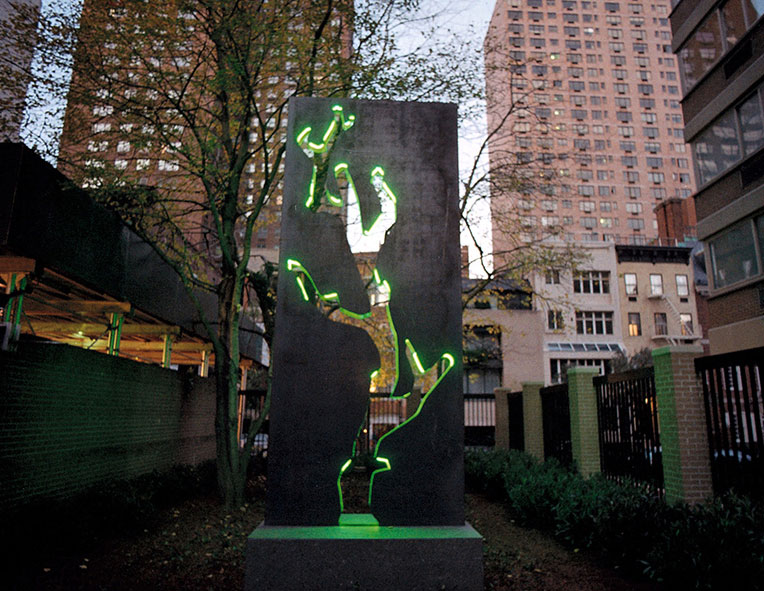
THE TREE OF LIFE, New York, 2009

THE TREE OF LIFE, New York, 2009
CONTINUITY, 2006
Madrid, Spain, multimedia site specific sculpture for the Patio of the Italian Institute of Culture Calle Major, Madrid Spain – now moved to the Italian Consulate courtyard. Donation of a private Spanish collector.
“The rainbow is at once subjective and objective, in our mind and in the world, as shown by the fact that no one can see someone else’s rainbow. And yet the rainbow is not a mental image, an incorporeal idea; the rainbow is a physical event outside the boundary of our body. The rainbow is partially in the cloud and partially in our brain. It represents a fundamental structure of reality: a process. The rainbow is not something that is (there in the cloud or here in the brain). The rainbow takes place.”
From Manzotti R. (2006), «Consciousness and Existence as a Process», in Mind & Matter.

CONTINUITY, Madrid, 2006
NO MORE, 2005
Borgholm, Sweden, Global Art Glass. Layered glass stripes to create a wall cm 270×300, central breach with raw red glass breaking through. Media: Layered flat glass stripes, sealed between layers, obtaining a solid Structure, an architectural wall irregularly broken at the centre, red neon inscription “No More”featuring the words written all over on the walls of our towns. Red pile of raw Murano glass, representing the energy, blood and strength of people in order to break walls and barriers.
“It is the shape of an emotion that perceptively fills the spectator in front of the scenographic glass and neon wall, No More. The same emotion felt and transcribed by the artist in her vision of light, colour and virtual movement. The transparency of the flat cut and layered glass sheets with their rough finish and red middle ground, veiled by translucent words of neon writing, the one switched on in the foreground, and of the heaped fragments at the foot of the wall, are all striking metaphorical elements. There is an immediate reference to the idea of a barrier, separation and repression, in the figure of the wall presented to the collective imagination. The wall as an archetype of social and racial, religious and political discrimination, of confinement to the sanctuaries of folly, of an ordinary daily violence that is a story of fear, hunger and tears. The English words No more refer to all the anonymous writings of love and hate, tolerance and intolerance, transmitted daily by the walls of cities to a fragile, disenchanted, tragically absent-minded and hurried humanity, in its hectic rush towards a dimly lit future. The central fracture, separating the two written words, out of which gushes a symbolic cascade of flame-red scrap, expresses the energy of a subject in revolt against pointless bloodshed. The uneasy yet aesthetically seductive installation No More reveals once again the conflictual connotation which this artist’s work has always visualized.”
(From Viana Conti, “Federica Marangoni, No More, project”, Global Art Glass Triennial, June 2005)
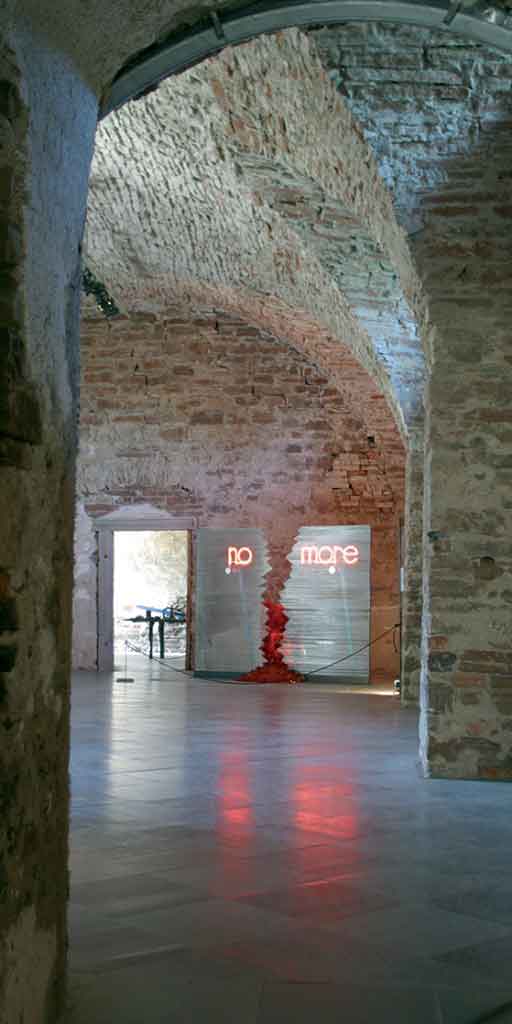
NO MORE, Sweden, 2005
THE CAGE OF LIGHT, 2004
Tenerife, public suspended installation: metal cage with moving lighting device, lava stone batch on the floor, with writing: “Light Is Always Free”.
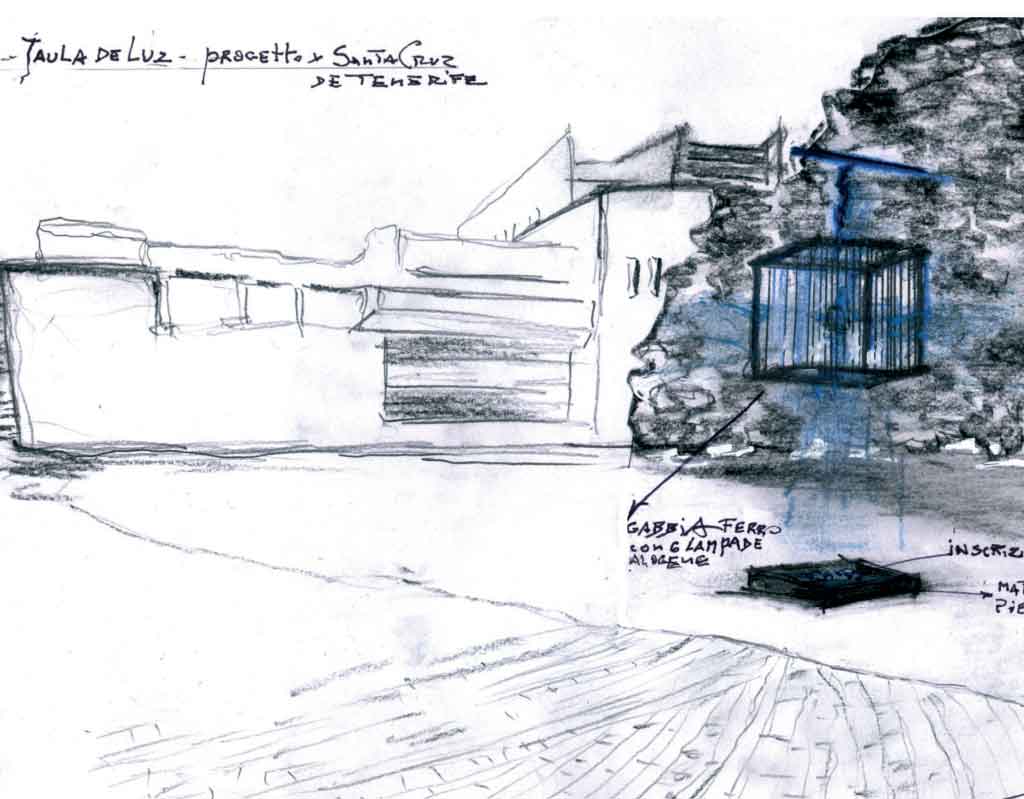
THE CAGE OF LIGHT, drawing, Tenerife, Spain.
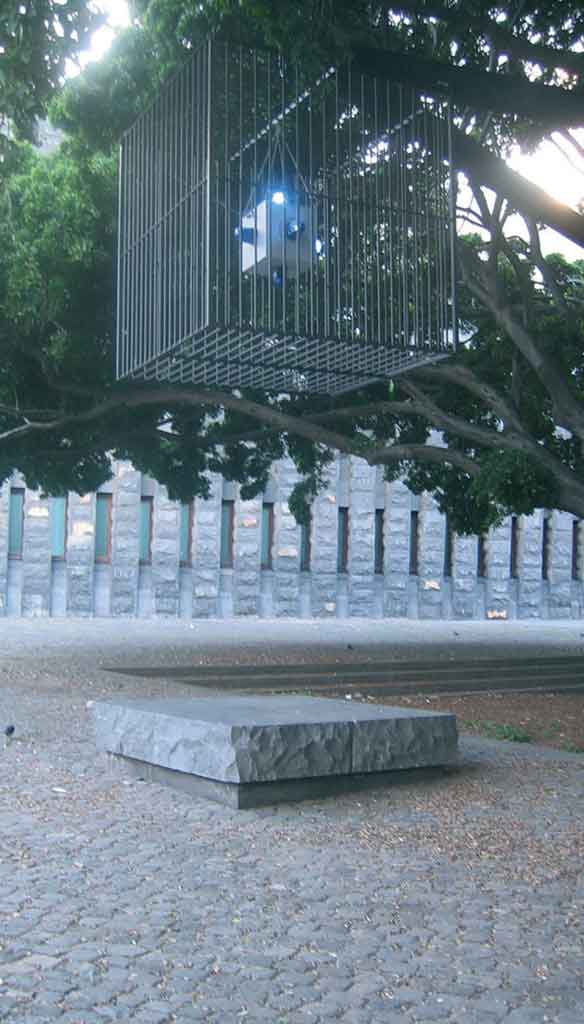
THE CAGE OF LIGHT, Tenerife, Spain.
RAINBOW CRASH, 2003
Site-specific sculpture, Parco Sculture del Chianti. Iron column with polychrome flow -neon system on both sides, laminated glass in 7 colors rainbow, Murano glass shreds on the floor.
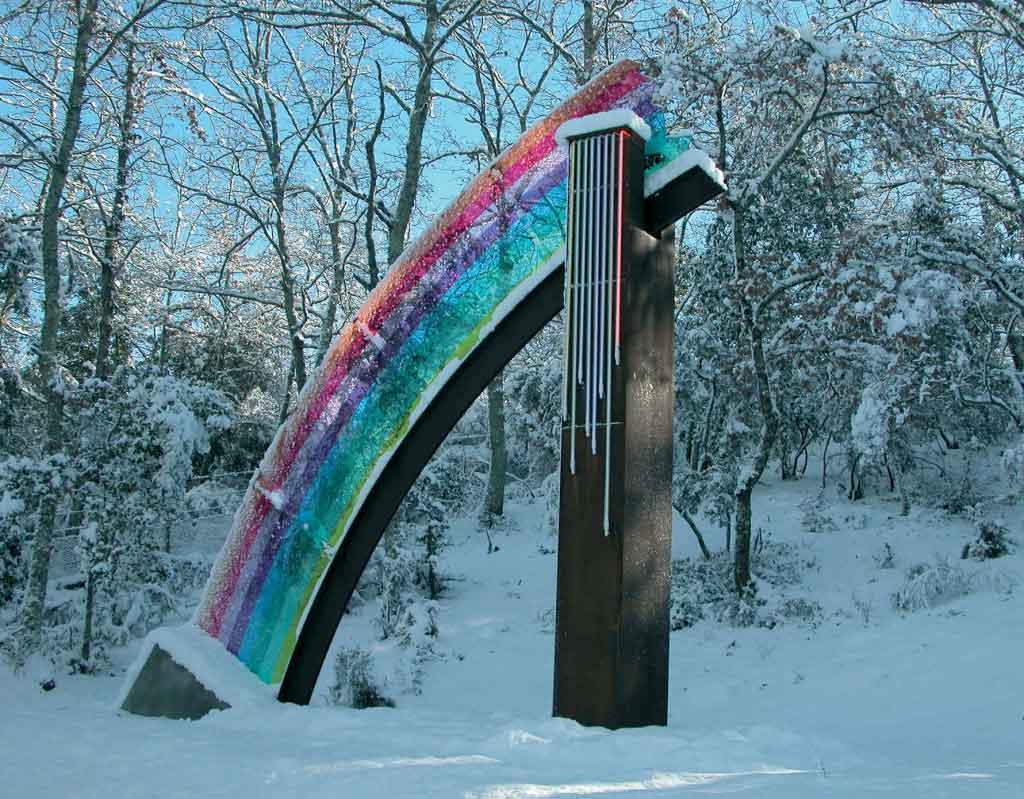
RAINBOW CRASH, Chianti Sculpture Park, 2003
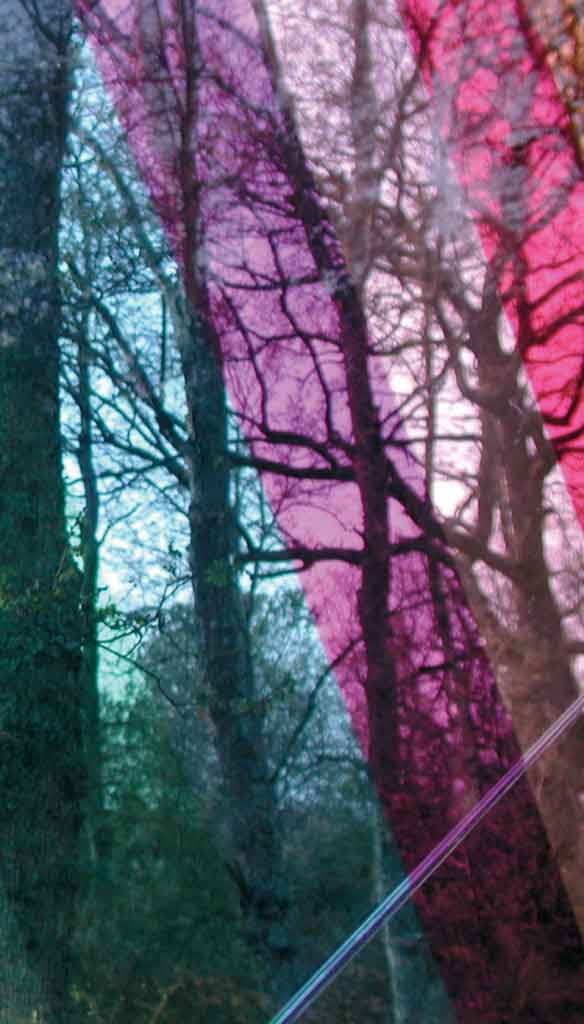
Glass detail
JACOB’S DREAM, 2001
Venice, Biennale of Visual Arts, public installation done at the Salute on the Gran Canal, blue Led light H 9m, now permanent on the Park of the Foundation Rossini for the Art, Briosco Milano.

JACOB’S DREAM, Venice, 2001
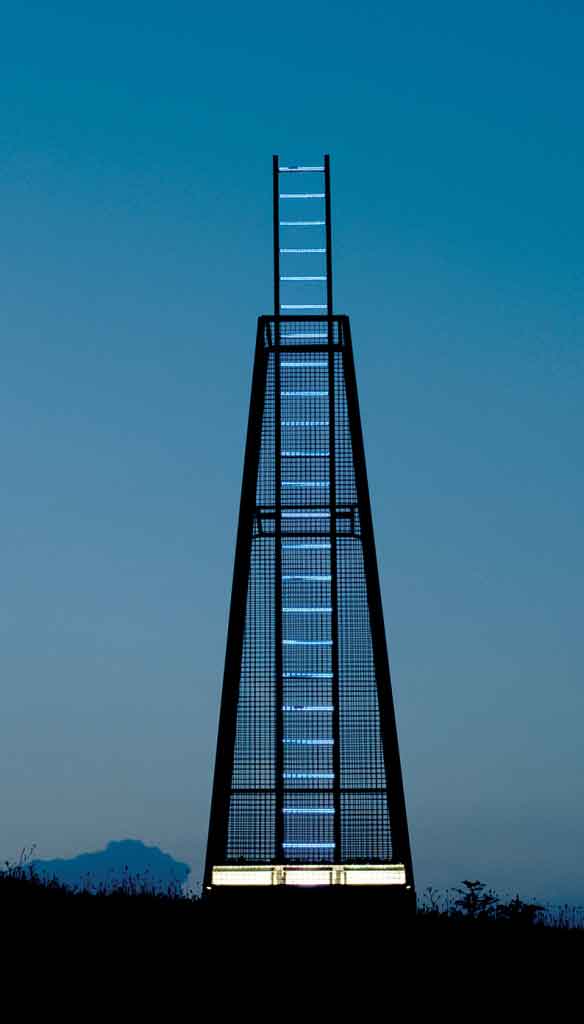
JACOB’S DREAM, Briosco, 2001
THE ELECTRONIC RAINBOW, 1997
Multimedia video installation, promoted by The City of Venice, with the Mazzotta Foundation, for the Venice Biennale and . located in the Arsenal courtyard. Laminated glass rainbow with an arch of 14m diameter at the base, multi-coloured shards of glass pile on one side, iron pyramid with 15 monitors, VHS tape 3D video , on the other side.
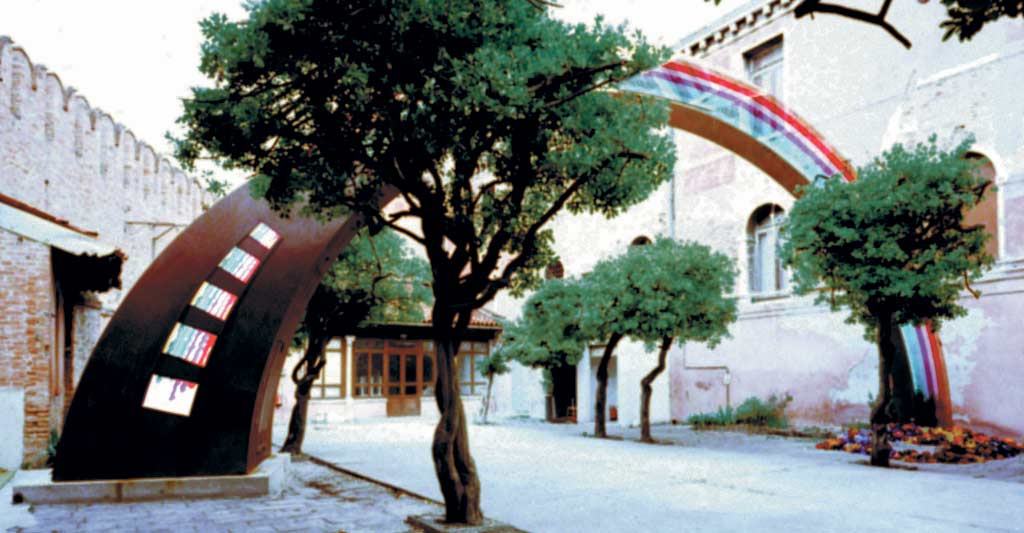
THE ELECTRONIC RAINBOW, Venice, 1997
ENERGY OF NATURE, 1995
Made for the Holly Solomon Gallery, NY , than moved to Virginia Beach Art Center, USA. Split sphere (2 m diameter) covered with glass shards in 4 colours representing the elements of nature. 5 monitors with images of fire at the centre of the sphere, larger circle of 8 monitors around with the video Energy of Nature, reflecting mirror on the smaller portion of the sphere, detached in order to create a passage for the visitors. Sound created by C. Sherman.
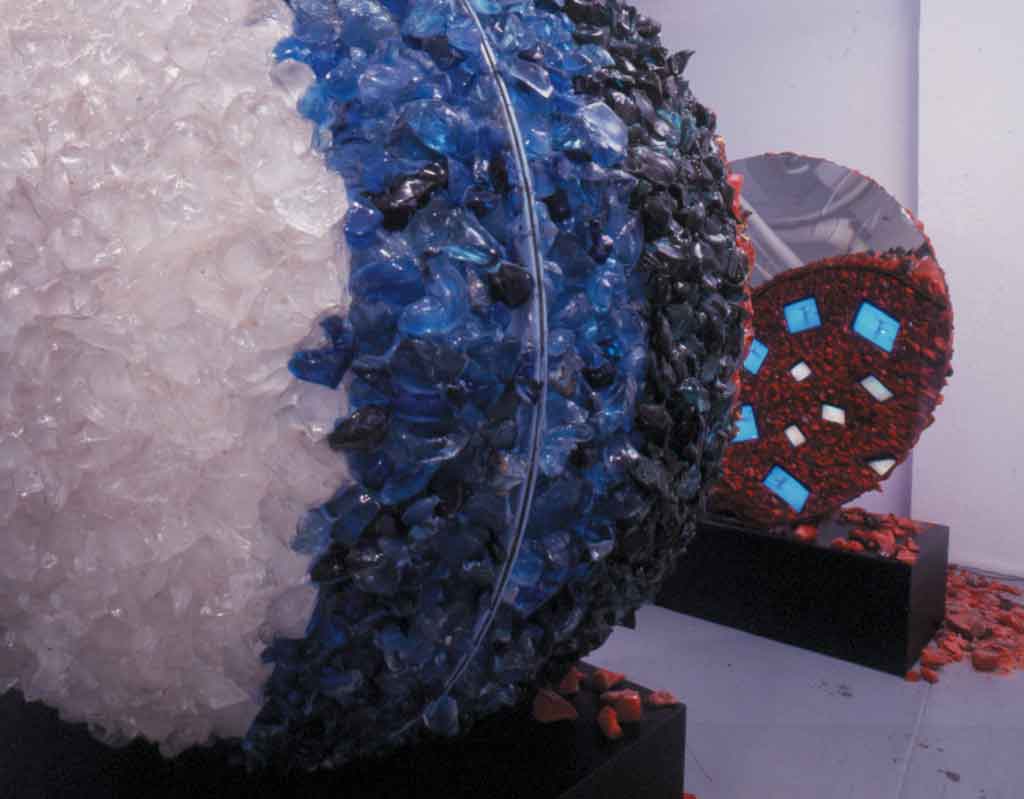
ENERGY OF NATURE, Virginia, 1995
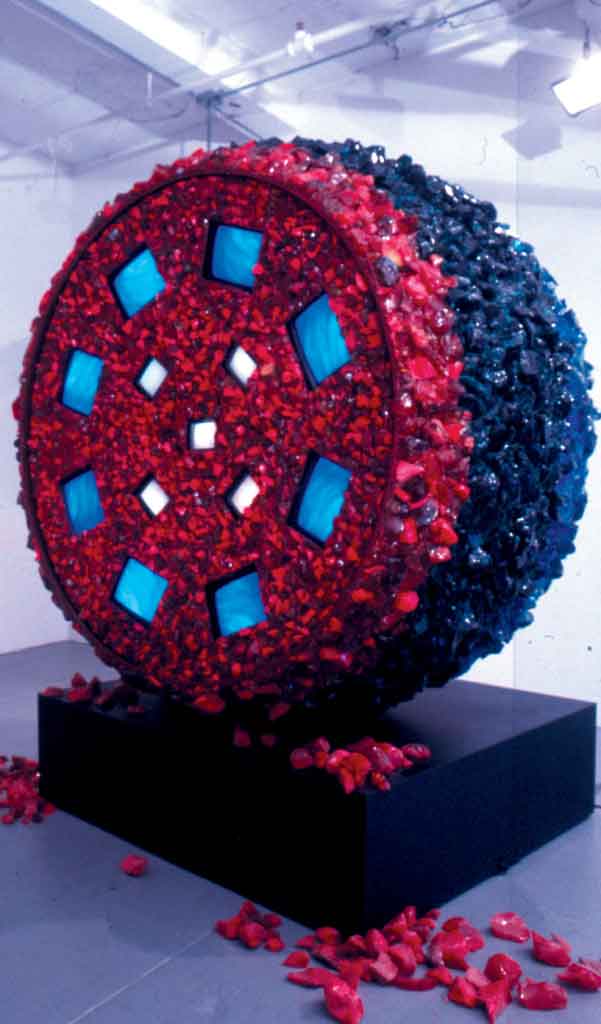
ENERGY OF NATURE, Virginia, 1995
THE BIRTH OF LIGHT, 1992

THE BIRTH OF LIFE, Barcelona, 1992
THE TRAP OF MEMORY, 1992
Labyrinth Fountain-sculpture, curved glass cases vita Murano glass grin rods, mosaic and mirror at the center, installed on the Paseo Torneo, Sevilla, Spain, diameter 12 m .
“Federica Marangoni has accomplished the seemingly impossible task of creating a public work in a landmark city that is not cloyingly full of watered –down historic allusions (typical of most such endeavours) but, instead, masterfully reconciles the ancient urban fabric with the age of information and ecology. Her fountain is a “place”, not a monument: an ambience, not a sculpture; an evocation, not a commemoration; a condition of growth and evolution, not a static fixture. Seville is fortunate to be beneficiary of her unique vision.”
(James Wines)
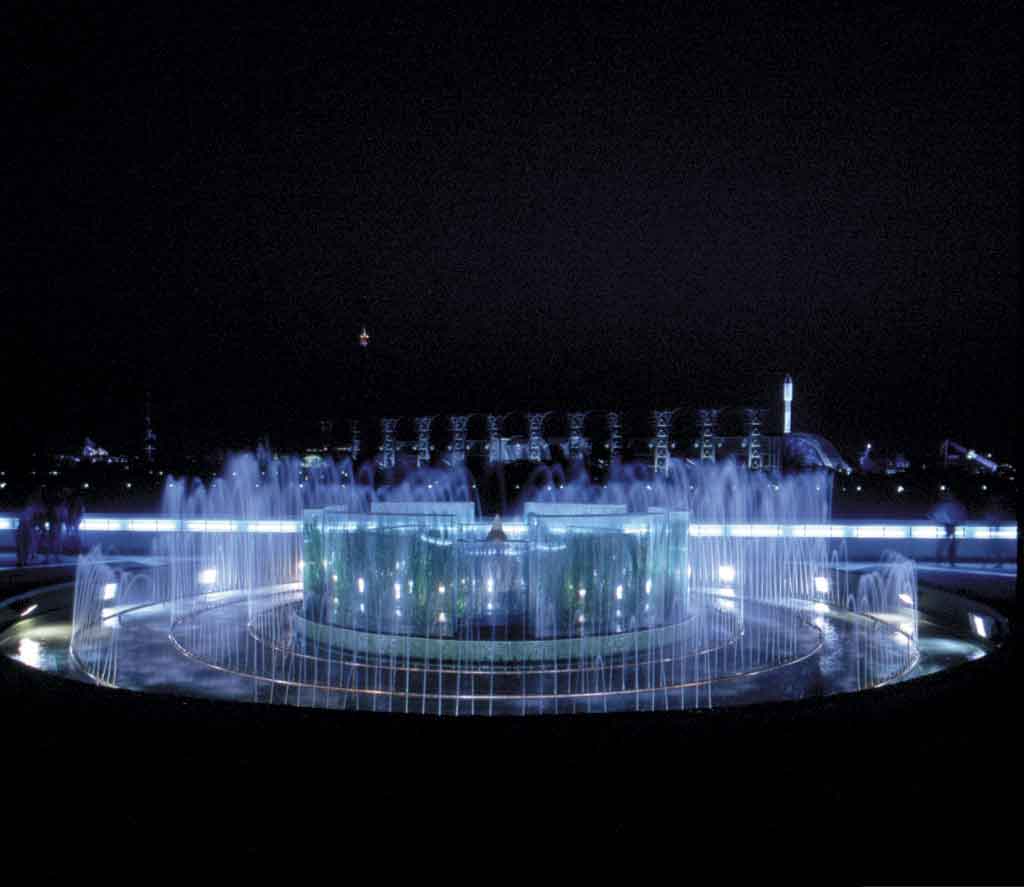
THE TRAP OF MEMORY, Seville, 1992
